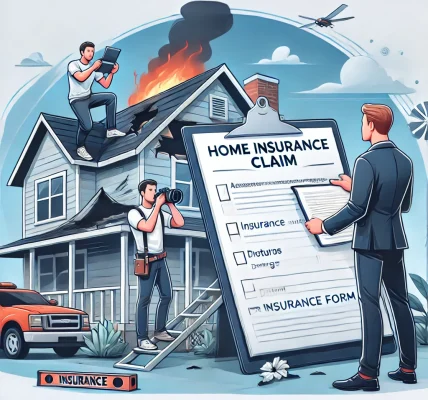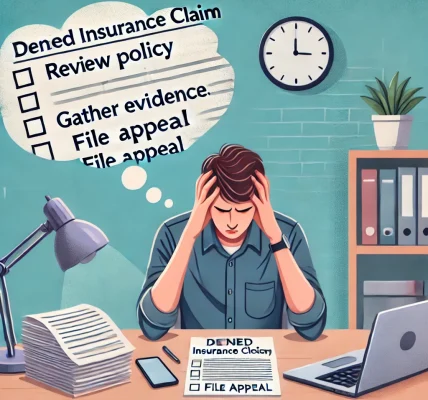Insurance fraud is a significant issue that affects both insurers and policyholders. Fraudulent claims not only cost insurance companies billions of dollars annually but also lead to increased premiums and stricter claim approval processes for honest policyholders. Understanding the different types of insurance fraud and how they impact your legitimate claims is crucial to ensuring a smooth and fair claims process.
In this guide, we will explore the various types of insurance fraud, how they affect genuine policyholders, and what you can do to protect yourself from fraudulent activities.
What Is Insurance Fraud?
Insurance fraud occurs when an individual or entity intentionally deceives an insurance provider for financial gain. This fraud can happen in various ways, such as exaggerating damages, submitting false claims, or staging accidents. It affects all types of insurance, including auto, health, life, and property insurance.
Common Types of Insurance Fraud
1. Hard Fraud
Hard fraud is a deliberate act committed to defraud an insurance company. It involves intentional and premeditated actions to create a false claim.
Examples of Hard Fraud:
- Staging a car accident to claim compensation.
- Arson (intentionally setting fire to a property) to collect insurance money.
- Fake deaths to claim life insurance benefits.
2. Soft Fraud
Soft fraud, also known as opportunistic fraud, occurs when a policyholder exaggerates legitimate claims to receive higher payouts.
Examples of Soft Fraud:
- Overstating the value of damaged property in a claim.
- Claiming pre-existing medical conditions as accident-related injuries.
- Inflating repair estimates after an insured loss.
3. Application Fraud
Application fraud occurs when an individual provides false or misleading information on an insurance application to secure lower premiums or obtain coverage they wouldn’t otherwise qualify for.
Examples of Application Fraud:
- Misrepresenting medical history when applying for health insurance.
- Providing false mileage or garage location for auto insurance.
- Hiding previous claims history to get a better rate.
4. Claims Fraud
Claims fraud happens when a policyholder submits a false claim or exaggerates the extent of a loss.
Examples of Claims Fraud:
- Submitting a claim for a stolen item that was never lost.
- Faking an injury to receive compensation.
- Using old damage to file a new claim.
5. Provider Fraud (in Health & Auto Insurance)
This type of fraud is committed by medical professionals, auto repair shops, or other service providers who inflate costs or charge for services never rendered.
Examples of Provider Fraud:
- Billing for unnecessary medical procedures.
- Charging for auto repairs that were never done.
- Submitting fake invoices to an insurer.
6. Identity Theft & Insurance Fraud
Fraudsters use stolen identities to buy insurance policies or file claims under someone else’s name.
Examples of Identity Theft Fraud:
- Purchasing life insurance under a stolen identity and naming themselves as beneficiaries.
- Using stolen personal details to receive medical treatment under another person’s policy.
- Filing false claims using stolen policy information.
How Insurance Fraud Affects Legitimate Policyholders
Even if you are an honest policyholder, insurance fraud can negatively impact you in several ways:
1. Higher Premiums
Insurance companies pass the cost of fraud onto consumers through increased premiums. The more fraudulent claims an insurer has to pay, the higher the cost for policyholders.
2. Stricter Claim Investigations
Due to fraudulent activities, insurers implement more rigorous claim verification processes, leading to delays and increased scrutiny for legitimate claims.
3. Denied or Reduced Payouts
If an insurer suspects fraudulent activity in a specific sector, they may tighten claim approval policies, leading to legitimate claims being unfairly denied or underpaid.
4. Legal Consequences
Even unintentional errors on claims or policy applications can be flagged as fraud, resulting in penalties, legal action, or policy cancellations.
How to Protect Yourself from Insurance Fraud
1. Be Honest on Applications
Provide accurate and truthful information when applying for insurance to avoid accusations of fraud.
2. Keep Thorough Records
Maintain copies of all claim-related documents, including photos, receipts, and medical reports, to support your claims.
3. Report Suspicious Activity
If you suspect fraudulent activity, report it to your insurance provider or regulatory authorities.
4. Verify Service Providers
Ensure that medical professionals, auto repair shops, and other service providers are legitimate before receiving services.
5. Monitor Your Insurance Accounts
Regularly check your insurance statements and policies to detect any unauthorized activity.
Final Thoughts
Insurance fraud is a serious issue that affects both insurers and honest policyholders. By understanding the various types of fraud and their consequences, you can protect yourself and ensure a fair insurance system. Always provide truthful information, document claims thoroughly, and report any suspicious activity to prevent fraudulent practices from impacting your legitimate claims.
Would you like a checklist to help you file an insurance claim correctly and avoid potential issues? Let us know!




